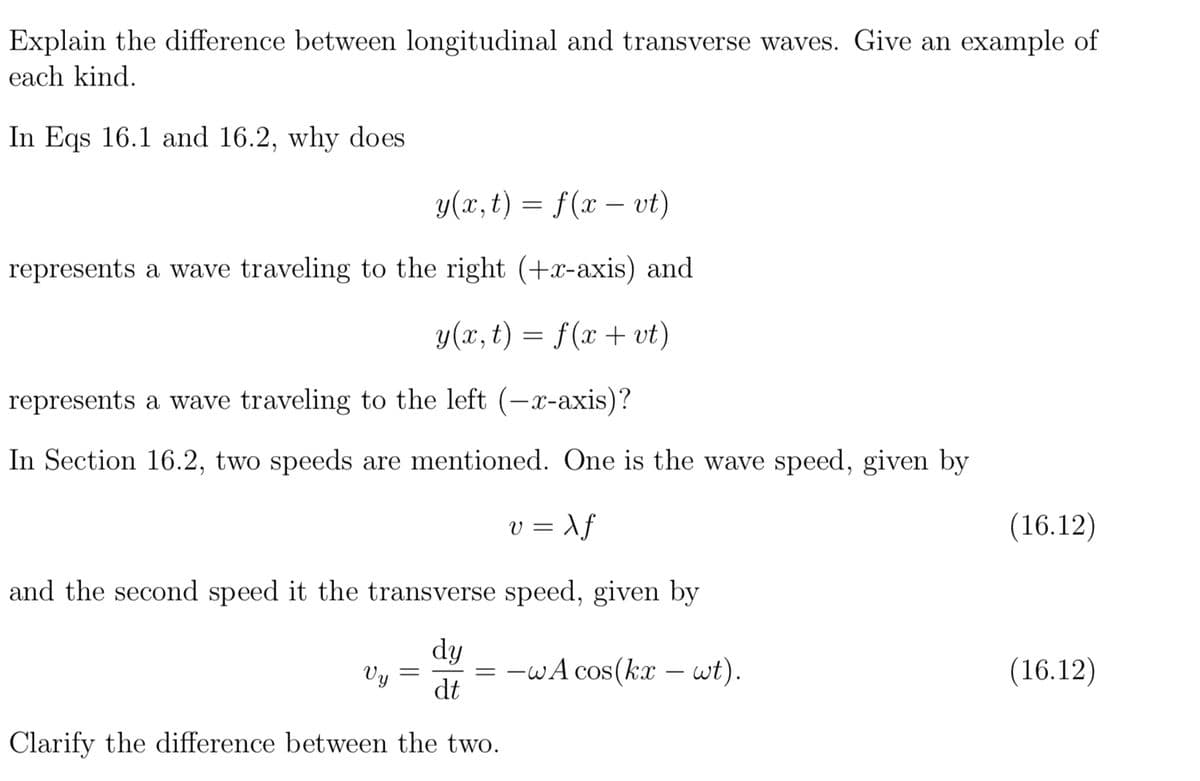Explain the difference between longitudinal and transverse waves. Give an example of each kind. In Eqs 16.1 and 16.2, why does y(x, t) = f(x - vt) represents a wave traveling to the right (+x-axis) and y(x, t) = f(x + vt) represents a wave traveling to the left (-x-axis)? In Section 16.2, two speeds are mentioned. One is the wave speed, given by v=Xf and the second speed it the transverse speed, given by dy dt Clarify the difference between the two. Vy = -wA cos(kx - wt). (16.12) (16.12)
Explain the difference between longitudinal and transverse waves. Give an example of each kind. In Eqs 16.1 and 16.2, why does y(x, t) = f(x - vt) represents a wave traveling to the right (+x-axis) and y(x, t) = f(x + vt) represents a wave traveling to the left (-x-axis)? In Section 16.2, two speeds are mentioned. One is the wave speed, given by v=Xf and the second speed it the transverse speed, given by dy dt Clarify the difference between the two. Vy = -wA cos(kx - wt). (16.12) (16.12)
Related questions
Question

Transcribed Image Text:Explain the difference between longitudinal and transverse waves. Give an example of
each kind.
In Eqs 16.1 and 16.2, why does
y(x, t) = f(x - vt)
represents a wave traveling to the right (+x-axis) and
y(x, t) = f(x + vt)
represents a wave traveling to the left (-x-axis)?
In Section 16.2, two speeds are mentioned. One is the wave speed, given by
v=Xf
and the second speed it the transverse speed, given by
dy
dt
=-wA cos(kx - wt).
Clarify the difference between the two.
Vy =
(16.12)
(16.12)
Expert Solution
This question has been solved!
Explore an expertly crafted, step-by-step solution for a thorough understanding of key concepts.
Step by step
Solved in 4 steps with 1 images
